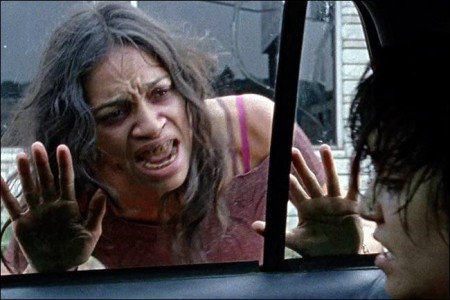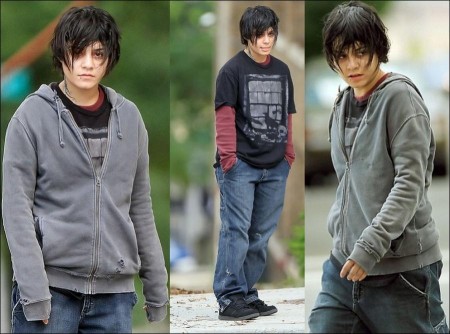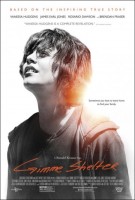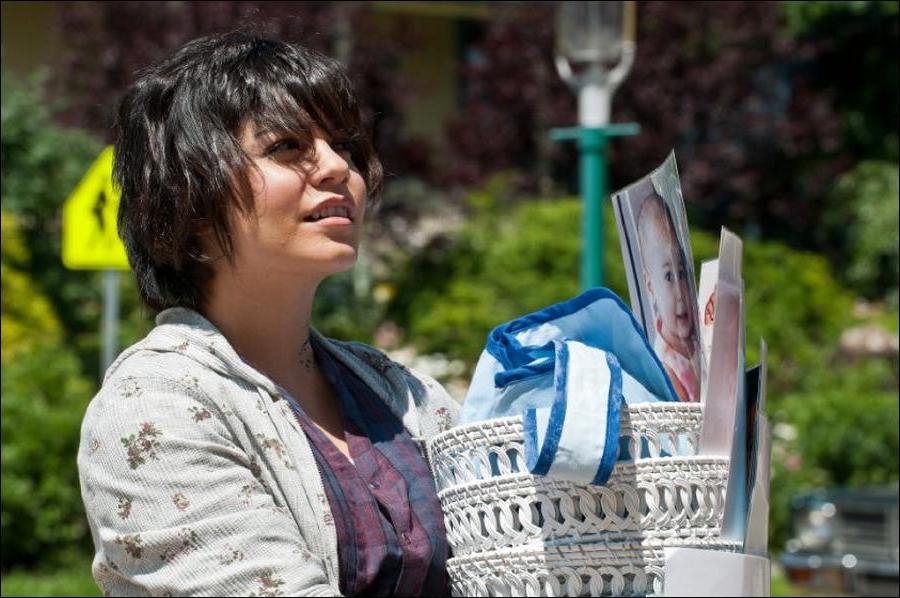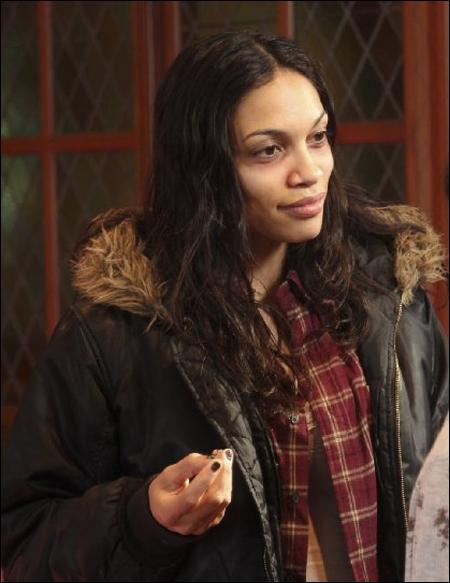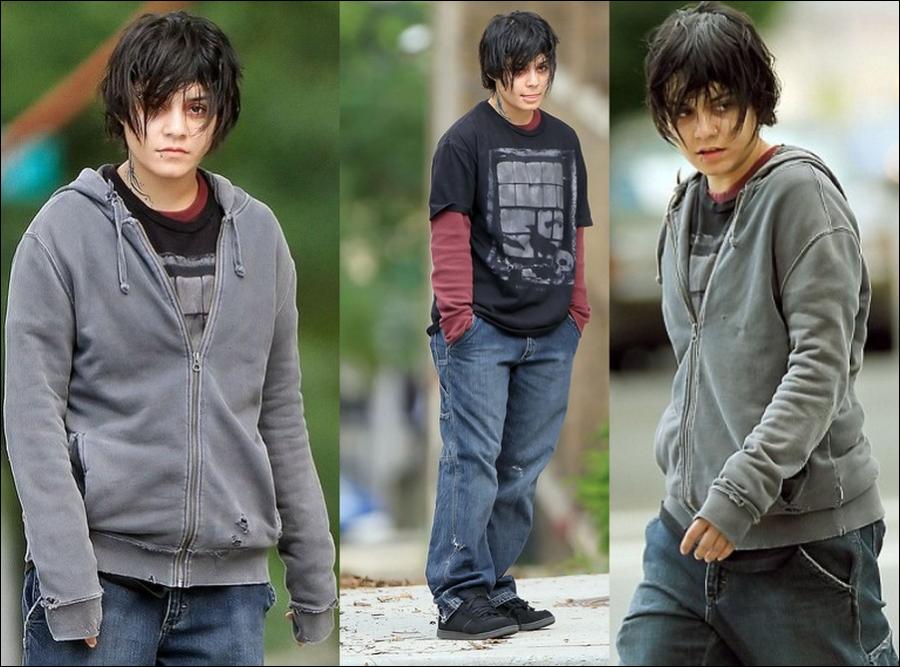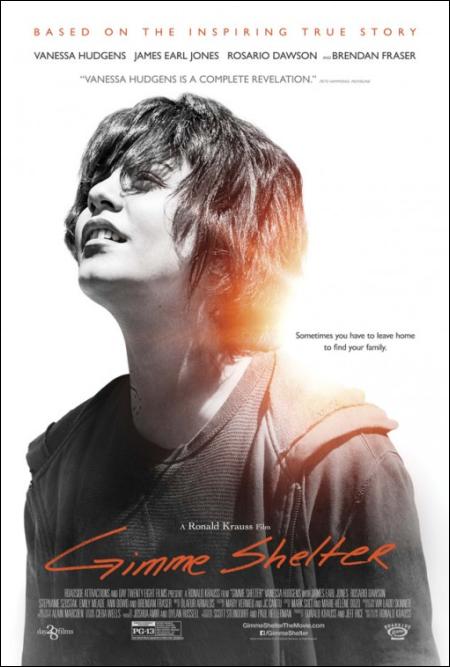Taglines: Sometimes you have to leave home to find your family.
16 year old street-wise Apple (Vanessa Hudgens) has never had an easy life. Her mother, June Bailey (Rosario Dawson), is an addict and prostitute, is verbally and physically abusive, and is grooming her daughter to follow in her footsteps. Apple knows the streets, alleys and motels like the back of her hand but wants more from her life. She possesses a tenacious, tough, indomitable spirit, and will not surrender to fate.
Apple runs away from her mother and tracks down her father whom she has never known, as he was only 19 when he got Apple’s mother pregnant. Apple begs her now Wall Street Broker father, Tom Fitzpatrick (Brendan Fraser), to take her in. In the few days under her father’s care, she learns she’s become pregnant by a kid from the streets she met on the train, who now wants nothing to do with her. She is forced to leave her father’s home because of her choice to give birth to the baby she is carrying. Apple runs away again, and is eventually taken under the wing of Father.
Based on a true story centering on 16-year-old Agnes “Apple” Bailey (Vanessa Hudgens), Gimme Shelter uncovers the struggle for survival and the hope of redemption through the harsh realities of life on the streets. As a pregnant teenager, Apple’s journey plummets her into a perilous struggle until finding salvation in a suburban shelter for homeless teens. With provisions of unprecedented comfort, a collective sisterhood connection and female empowerment, the shelter inspires Apple to break the shackles of her past and inspires her to embrace the future with clarity, maturity and hope not only for herself but her unborn child.
16 year old street-wise Apple (Vanessa Hudgens) has never had an easy life. Her mother, June Bailey (Rosario Dawson), is an addict and prostitute, is verbally and physically abusive, and is grooming her daughter to follow in her footsteps. Apple knows the streets, alleys and motels like the back of her hand but wants more from her life. She possesses a tenacious, tough, indomitable spirit, and will not surrender to fate.
Apple runs away from her mother and tracks down her father whom she has never known, as he was only 19 when he got Apple’s mother pregnant. Apple begs her now Wall Street Broker father, Tom Fitzpatrick (Brendan Fraser), to take her in. In the few days under her father’s care, she learns she’s become pregnant by a kid from the streets she met on the train, who now wants nothing to do with her. She is forced to leave her father’s home because of her choice to give birth to the baby she is carrying. Apple runs away again, and is eventually taken under the wing of Father.
AboutThe Production
Ron Krauss has been writing, producing and directing intensely personal movies since his first short film, Puppies for Sale (starring Jack Lemmon), began collecting rave reviews and international awards in 1998. Whether making documentaries or narrative films, Krauss’ focus is always on reflecting real-life issues with compassion, hope and authenticity. When his recent project, Amexica, a devastating drama about human trafficking, was screened at the United Nations, Krauss unexpectedly discovered the subject of his next film.
There he was introduced to Kathy DiFiore, a remarkable woman who was being honored at the UN for her work with teenaged mothers. Formerly homeless, DiFiore managed to put her life back together before founding Several Sources Shelters, a network of resources devoted to helping women in need. “I was immediately intrigued,” Krauss says. “I arranged to visit one of her shelters and I was awed by what I saw.”
At the shelter, Krauss met pregnant, homeless teenagers as young as 15 who had been turned out of their homes with nowhere to go. His initial thought was that he had found the perfect subject for his next documentary. Moving into the shelter to get an up-close look at the lives of these young women, their babies and the dedicated workers who support them, Krauss stayed a year and recorded close to 200 hours of interviews with the shelter’s residents.
As he learned more and more about his subjects, the compelling stories he heard fired his imagination and he began to reconceive his ideas about the project. “The shelter began to seem like holy ground to me,” he says. “As I became close to several of the girls and heard their stories, I began to write this screenplay based on their lives.”
Being at the shelter was a profound, even life-changing experience, says Krauss. “It opened my eyes. Just like the movie, I went from fall to winter, spring and summer with the girls. Even for me, staying there was one of the hardest times of my life. The girls who live there are relying on this place for survival.”
He witnessed first-hand how lives are changed through DiFiore’s work. “When I’d only been there a short time, I saw a young girl standing in front of the shelter,” the filmmaker recalls. “She didn’t have a coat and it must have been 18 degrees outside. I thought she lived there, so I let her in. When Kathy showed up, it turned out she wasn’t a resident. In fact, no one there knew her. She had heard about the shelter and walked about 25 miles to get there, with no coat and three months pregnant.”
Fortunately, there happened to be a bed available at the shelter. “All this time, she had been acting like everything was fine, but in reality she was desperate for a place to stay,” says Krauss. “When she heard there was room for her, she grabbed me and hugged me so hard she almost knocked me over. That hug was the inspiration for the movie.”
The girl, Darlisha Dozier, became one of the primary inspirations for Apple’s story. “Darlisha came from a very abusive home,” says Krauss. “There’s a shockingly violent incident in the movie between Apple and her mother that really happened to Darlisha. She has a small part in the film, as does a girl named Alison Bailey, who also provided inspiration for the character. The story is real and the girls are real.”
Another pivotal part of the story is Apple’s relationship with Tom Fitzpatrick, her biological father. The character is based on a real-life Wall Street executive whose young daughter is a resident at the shelter. “Teen homelessness and pregnancy are not limited to any economic strata,” observes Krauss. “It happens to rich and poor families. I felt those two characters embodied some of the most important things I learned.”
To ensure the film would be as authentic as possible, Krauss began to involve the girls themselves in the writing process. He scheduled “script nights” where they would read sections of the movie and share their thoughts on the story as it developed. “They helped me find the reality of their lives,” Krauss says. “They shared their deepest emotions about what it is to be homeless, to not know where you’re going to be tomorrow.”
When Krauss eventually showed his script to people in the entertainment industry, he was surprised by the overwhelming emotional response he received. “Homeless teens and crisis pregnancy are an unusual subject for a mainstream film,” he says. “I wasn’t sure anyone would care. In fact, there was enormous interest. Many young actresses saw this as a showcase for their talent. The character is in virtually every scene and goes through so much.”
While he was writing the script, Krauss says he never imagined casting a Hollywood star in the lead role. He had planned to scour local high schools in search of an unknown with the emotional transparency and resilience to embody Apple’s formidable spirit. But after meeting with Vanessa Hudgens, best known as perky A-student Gabriella Montez in the three High School Musical films, Krauss began to reconsider. “Vanessa was a little different from anyone else I met,” he says. “And she was hungry for the transition.”
In fact, the actress was so eager to play the part that she came to her audition in character as Apple. “I knew I could bring her to life,” Hudgens says. “It was an opportunity to completely transform myself. When I looked in the mirror, I didn’t see myself. The story, which is based on the lives a several young women who stayed at the shelter, is completely terrifying, which was all the more reason why I wanted to do it.”
Her transformation and her enthusiasm for the role impressed Krauss, but the filmmaker kept his options open, narrowing down the field to a mixture of about a dozen rising stars and complete unknowns. Then, in an unusual move, he screened their auditions for the girls at the shelter.
“I was already focused on Vanessa, but I needed confirmation from them,” he says. “They had no idea who she was. Some of them had never even been to a theater until I took them to a movie night while I was staying there. But they confirmed what I already felt. They said that Girl Number 8-Vanessa-was the most like them.”
Landing the role was just the beginning of a long and challenging journey for Hudgens. As Apple, she is a far cry from the actress and pop singer that her fans look up to. Drastically deglamorized, Hudgens is almost unrecognizable after adding about 15 pounds to her diminutive 5’1″ frame. The only makeup she wears is designed to mask her wholesome beauty.
“I chopped all my hair off,” she says. “I had a neck tattoo with fake piercings and I wore baggy old clothes. When I walked around the building I lived in and no one recognized me, I started to get really excited about the role. The hardest thing was trying to stay away from paparazzi. I wanted the way I looked to be a complete surprise.’
Gimme Shelter
Directed by: Ron Krauss
Starring: Vanessa Hudgens, Rosario Dawson, Brendan Fraser, Stephanie Szostak, James Earl Jones, Laneya Wiles, Emily Meade, Ann Dowd
Screenplay by: Ron Krauss
Production Design by: William Ladd Skinner
Cinematography by: Alain Marcoen
Film Editing by: Marie-Hélène Dozo, Mark Sult
Costume Design by: Ciera Wells
Set Decoration by: Stephanie Beaurain, Cathy T. Marshall
Music by: Ólafur Arnalds
MPAA Rating: PG-13 for mature thematic material involving mistreatment, some drug content, violence and language – all concerning teens.
Studio: Roadside Attractions
Release Date: January 24, 2014
Visits: 154
